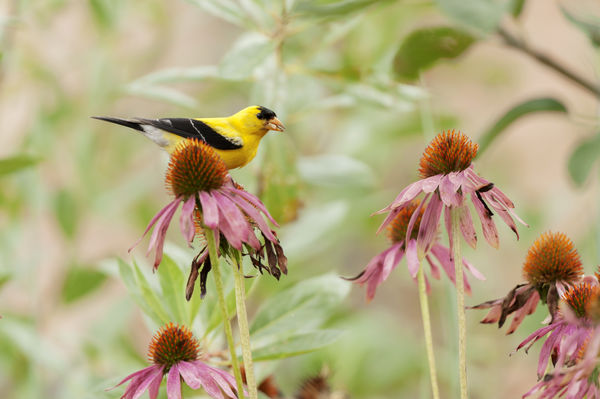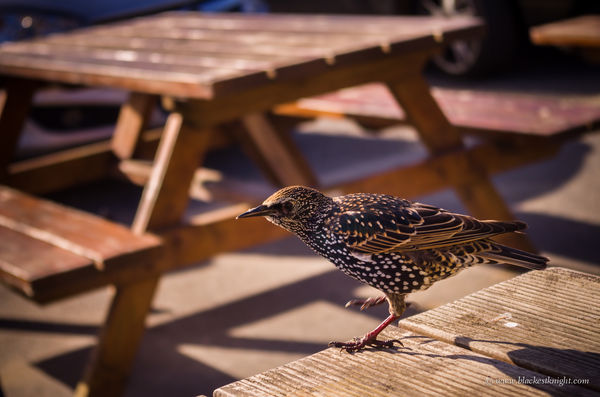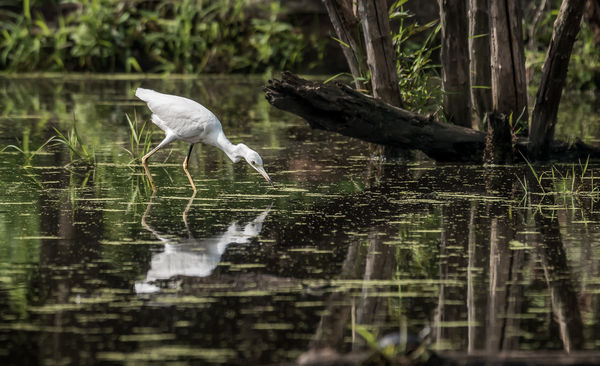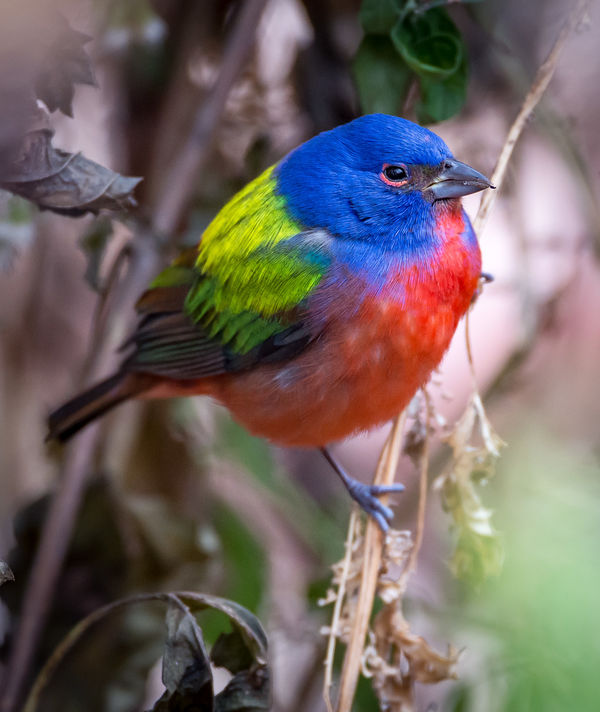Full frame
Aug 13, 2017 16:32:47 #
SusanFromVermont wrote:
Performing the demonstration as I suggested ought ... (show quote)
Totally agree! The better quality comes from the magnification to get to the same size image, which everyone who believes there is little difference or that a crop camera is somehow better can't seem to get their heads around - less magnification means better image quality. Period.
Aug 13, 2017 16:33:55 #
Gene51 wrote:
So you have a tradeoff between cropping a 36MP image down to 16MP or taking the 24MP APS-C ... one will have more detail while the other may have less noticeable noise, depending on amount of light on the scene.And it gets the noise if the pixels are smaller.
Gene51 wrote:
Only if the fewer pixels isn't a problem.Totally agree! The better quality comes from the magnification to get to the same size image, which everyone who believes there is little difference or that a crop camera is somehow better can't seem to get their heads around - less magnification means better image quality. Period.
Aug 13, 2017 16:35:43 #
Edia wrote:
FF is better for landscapes and portraits and not as good for sports and wildlife photography when compared to APS-C.
Not true. I used to shoot with D300S, results were instantly better when I got a D700 and later a D3S. When I shot landscape with my crop cameras (D70S, D200, D300S) I rarely cropped my images so there were more pixels on the subject. When I did wildlife and sports, I often had to crop more, putting fewer pixels on the subject. The oft repeated mantra of crop for sports and wildlife and full frame for landscape and architectural has no real basis.
Aug 13, 2017 17:00:52 #
Dear Sir,
The best advantage of FF over Crop sensor which so far I have figured out
The advantage goes to only and only to the manufacturer. More $$$$ in their pocket.
I like to post here few award winning pictures been taken by experienced photographer with a card-board pinhole camera. We are so spoiled and brain washed that we forgot it's 100 times much faster to multiply (32343x10) in the head rather using a calculator.
If you are planning to buy a camera and you have money to burn please buy FF it feels good to hold FF in the hands and when a semi professional gonna see a FF in your hand he may be ENVY. For me a camera is just a camera I know people in real life who shoot with a dirt cheap camera better than a FF.
The best advantage of FF over Crop sensor which so far I have figured out
The advantage goes to only and only to the manufacturer. More $$$$ in their pocket.
I like to post here few award winning pictures been taken by experienced photographer with a card-board pinhole camera. We are so spoiled and brain washed that we forgot it's 100 times much faster to multiply (32343x10) in the head rather using a calculator.
If you are planning to buy a camera and you have money to burn please buy FF it feels good to hold FF in the hands and when a semi professional gonna see a FF in your hand he may be ENVY. For me a camera is just a camera I know people in real life who shoot with a dirt cheap camera better than a FF.
Aug 13, 2017 17:11:45 #
Gene51 wrote:
Not true. I used to shoot with D300S, results were instantly better when I got a D700 and later a D3S. When I shot landscape with my crop cameras (D70S, D200, D300S) I rarely cropped my images so there were more pixels on the subject. When I did wildlife and sports, I often had to crop more, putting fewer pixels on the subject. The oft repeated mantra of crop for sports and wildlife and full frame for landscape and architectural has no real basis.
I guess you could say with a full frame you can always get nearer your subject. since you have a bigger sensor to fill. You always will need to enlarge the aps sensor sized image more in comparison.
If you're heavily cropping an image, doesn't that imply you were using the wrong lens or in the wrong location? Maybe the shutter needs to be pressed remotely, if you're scaring your subjects so badly.
Aug 13, 2017 17:37:53 #
ottopj wrote:
Google this and it will keep you busy for weeks: advantages of full frame vs. crop frame
there are definitely advantages for using a full frame camera, that the crop sensor cameras CANNOT touch. A full frame camera has a bigger sensor, which leads to sharper photos. A full frame camera has a bigger sensor, which allows for sharper photos when shooting in low light situations than a crop sensor camera can deliver. So, yes, IMHO, a better camera will make you a better photographer, ASSUMING all things being equal, like knowing how to use your equipment. I recently acquired a Nikon D3, and I love it!! Yes, it is a beast, but when coupled with my Nikon 200-500 mm lens, I have little trouble shooting hand held, and I am 73 years old. Here is a photo I took just today, the goldfinch was about 40 yards off. I cropped the photo to suit me tastes, then I resized the photo to the original dimensions, with very little loss of detail. And, yes, I shot it hand held!
Aug 13, 2017 18:13:28 #
I have made two replies to this post, but, I don't see them! Wonder why?
Aug 13, 2017 20:46:05 #
rehess wrote:
Only if the fewer pixels isn't a problem.
If you look at most of my bird shots, they are cropped down to 4-6 mp. In reality 16 mp would be an outstanding luxury. But realistically, it is rarely the case. The reason I shoot with a 36mp full frame and a 600mm is that a longer lens would be heavier and unwieldy, and would be hard to keep the subject in the frame if it is moving or flying around. I have watched other photographers try and hand hold a 150-600 on a crop camera, or a 100-400 with a 1.4 extender on a crop camera, and there is a lot of blur. To counteract the blur they have to raise the ISO to 1600 or higher, and there goes the image quality. It is a fact of life we bird shooters all deal with, and why many of the better images I've seen are taken with 500 or 600mm lenses on high mp full frame cameras.
I put the crop information for the Cardinal shot - the D800 shot was cropped to just under 4 mp. I have printed it at 16x20 and 110 ppi and it was more than detailed enough. I would not hesitate to print it even larger, probably up to 24x30 at the same resolution. You only need half the ppi to make an image appear sharp and crisp.
http://www.photokaboom.com/photography/learn/printing/resolution/1_which_resolution_print_size_viewing_distance.htm
Aug 13, 2017 20:47:14 #
jradose wrote:
I have made two replies to this post, but, I don't see them! Wonder why?
You have entered the Twilight Zone!!!
Aug 13, 2017 21:07:01 #
blackest wrote:
I guess you could say with a full frame you can always get nearer your subject. since you have a bigger sensor to fill. You always will need to enlarge the aps sensor sized image more in comparison.
If you're heavily cropping an image, doesn't that imply you were using the wrong lens or in the wrong location? Maybe the shutter needs to be pressed remotely, if you're scaring your subjects so badly.
If you're heavily cropping an image, doesn't that imply you were using the wrong lens or in the wrong location? Maybe the shutter needs to be pressed remotely, if you're scaring your subjects so badly.
Nope - If I am shooting an eagle at 50 yds with a 600mm lens, and I can get the detail and sharpness I want even after cropping I am definitely using the right gear and in the right place. Using a remote trigger when shooting a bear in the woods would be a sure-fire way to miss the shot. Apparently you are not using long lenses with small and jittery subjects.
Look here and tell me which of the birds in flight and otherwise would have been better taken with a longer than 600mm lens (remember, these have to be hand held and more than 600mm would be hard to hold), and with a remote shutter (these guys are moving around a bit, especially the skimmers).
https://www.flickr.com/photos/gene_lugo/
Just in case, here are a couple of samples. They were all done hand held, with a D800, 150-600 Sigma Sport, at 600mm (I think). Most on UHH will tell you I used the wrong camera, I should have used a D500 or something faster than a D800 which only has a frame rate of 4 fps. Oh well, I guess I didn't get the memo on that.
Seriously, these kinds of images not possible with remote trigger, longer lens, etc. I don't thing the shutter noise or me pushing the shutter was a factor in any of these shots.
I suggest you try your method, and post the results. Then we can have an informed discussion about remote triggers and longer lenses for shooting wildlife and birds.
Black Skimmer - close up of face
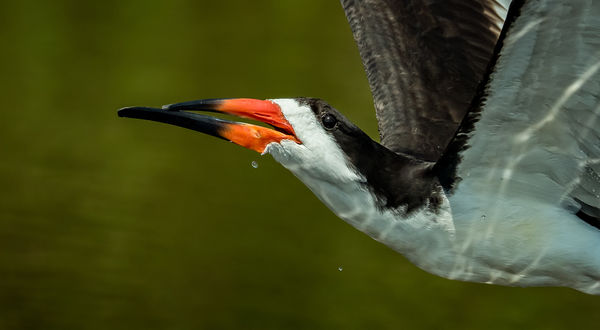
(Download)
Black Skimmer
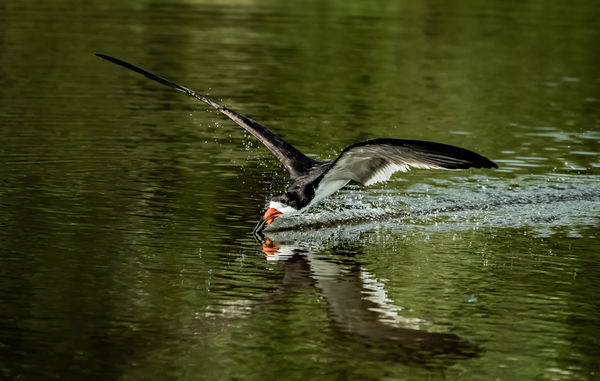
(Download)
Great White Egret
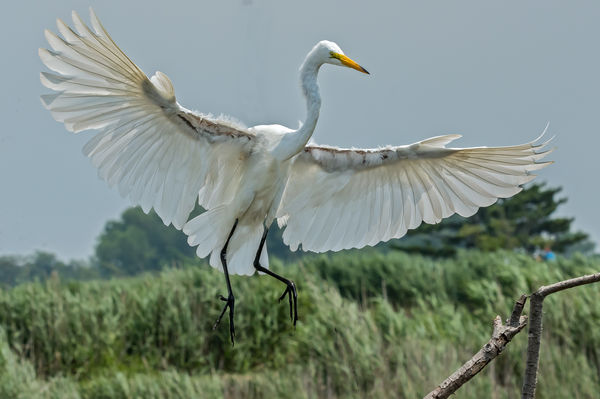
(Download)
Snowy Egret
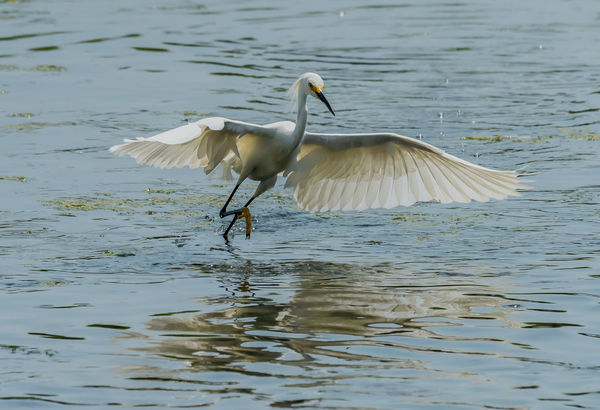
(Download)
Female Purple Martin
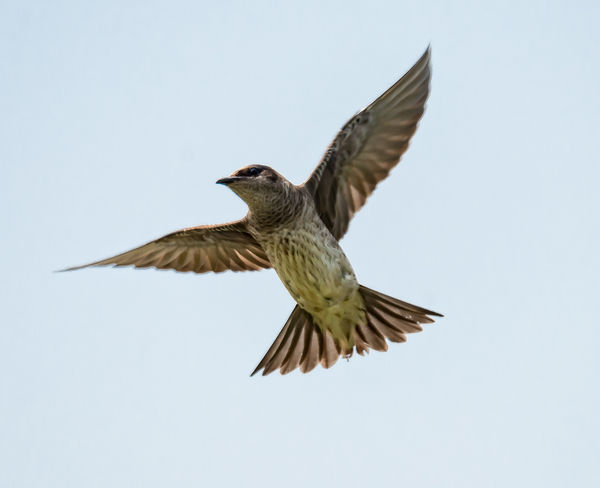
(Download)
Male Purple Martin
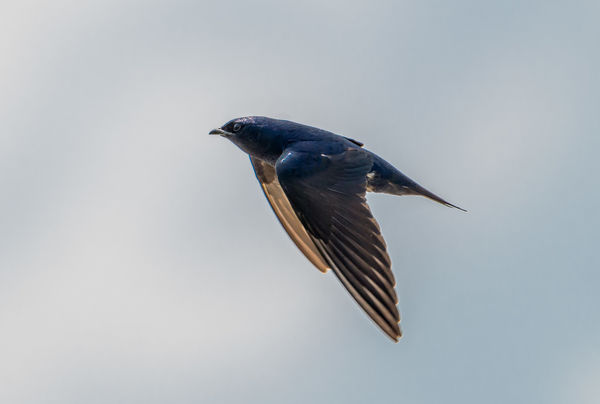
(Download)
Aug 13, 2017 21:20:15 #
PHRubin wrote:
Given a FF camera or an APS-C (DX) camera of the same megapixel count, it is NOT the same as cropping the FF. The area covered by the APS-C gets all the sensor pixels, but not on the FF.
And?
Aug 14, 2017 03:50:06 #
Gene51 wrote:
Nope - If I am shooting an eagle at 50 yds with a ... (show quote)
I'm not a bird photographer, but Ron Dudley is.
http://www.naturephotographysimplified.com/bird-photography/interview-ron-dudley-amazing-bird-photographer/
"But one of the biggest problems with birds in flight is keeping them in frame if youâre close enough for good detail. Once again it takes lots of practice and even then youâre going to clip/cut off many wings and other body parts â that just comes with the territory. To minimize that problem always be mindful of your distance from the bird when you push that shutter button. Too far away and you have little detail, too close and you clip body parts. Itâs all part of the gameâ¦"
His website is here
http://www.featheredphotography.com/blog/2017/07/23/a-rehabbed-burrowing-owl-release-that-meant-a-lot-to-me/
http://www.featheredphotography.com/blog/2017/08/11/yellow-warbler-a-compositional-conundrum/
This one he has cropped to about 50%. It does seem that he is getting closer and using longer lenses.
I don't really do bird photography but I took this one, there is no cropping 55mm iso 80 f5.6
Aug 14, 2017 05:53:53 #
blackest wrote:
I'm not a bird photographer, but Ron Dudley is. br... (show quote)
Our starlings are just as tame. You can sit anywhere in Central Park and they all show up along with dozens of other birds.
I totally agree with his experience with birds and distances. He is probably getting as close as I am, but I have the extra resolution and larger frame size for cropping. He uses greater magnification, lower ISOs and a crop sensor.
Sometimes I just can't get close enough, so I turn it into a landscape with a bird in it, like the juvenile little blue heron (not an egret) in the shot below.
His stuff is great - I see mostly static shots - perched or walking about, etc. though the few he has in flight are quite good. You do have to get pretty close for the smaller birds. Most of his stuff is in good strong light, judging from his exposure settings. I wish I could carry and hand hold a 10 lb lens and camera, or add another 7.5 lbs for a Wimberley head and Gitzo Gt3530LSV, and lived in Utah with unfettered access to places like he has. Yes, I am jealous. I live a mile from NYC, so I shoot what I can.
The Yellow Warbler shot is pretty good for a 50% crop on a 7D. He mentioned he wouldn't go any tighter because of loss of detail.
Regarding cropping by comparison, I had no trouble cropping the painted bunting from 36mp to 5.8 mp, or to 16%. It was shot at Prospect Park in Brooklyn, NY, with a D800, 1/200, F4 ISO 1600, 600mm F4 on a tripod. Light was dreadful NYC heavy overcast, and this little guy was deep in the bushes. He does make my case about the "croppability" of a high mp, full frame camera, and at the same time he makes a strong case for longer lenses, teleconverters and crop sensor cameras. I think I still get similar or better results. His 10 mp warbler clearly lacks the detail of my 5.8 mp bunting, don't you agree?
Aug 14, 2017 06:16:22 #
blackest wrote:
I'm not a bird photographer, but Ron Dudley is. br... (show quote)
But my favorite NYC based bird shooter is Sharron Crocker, and she uses a Canon 5DMk III and a 400mm F5.6, hand held for all of her birds.
https://untamednewyork.smugmug.com/Birds
She is a generalist who also shoots birds, and she often crops to 25% or less. She loves the low noise of the 5DMk III and the sharpness of her 400mm F5.6. She is currently awaiting delivery of the new 100-400 II which should open up some new opportunities, particularly when she uses it with the 1.4 III
Aug 14, 2017 06:40:21 #
Gene51 wrote:
First image - D800, ISO 800, cropped from 7360x4910 to 1747x2236, or 32% of original uncropped image.
Second image - D500, ISO 800, cropped from 4684x3122 to 1008x1232 or 28% of original uncropped image
Any questions?
Second image - D500, ISO 800, cropped from 4684x3122 to 1008x1232 or 28% of original uncropped image
Any questions?
Gene, can I assume you are using an FF lens on the D800 and a DX lens on the D500 ?? And the distance from the cardinal to camera was approximately the same in both cases ?
I was really surprised to see that much noise/snow from the D500. ~FiddleMaker
If you want to reply, then register here. Registration is free and your account is created instantly, so you can post right away.




